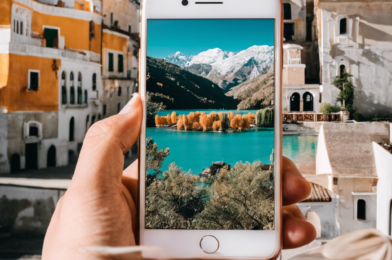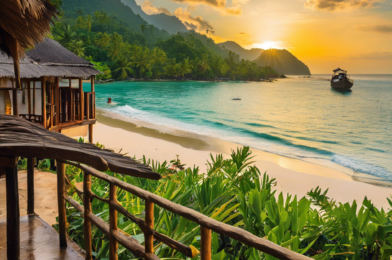Travel photography is an art that allows us to capture and relive our travels through vivid memories. And nowadays, with high-quality cameras built into our phones, we have the tools to become travel photographers right at our fingertips. Whether you’re wandering through ancient ruins, hiking in lush forests, or immersing yourself in a bustling city, here are some tips to help you capture stunning photos and make the most of your phone’s camera.
First, consider composition. The rule of thirds is a classic photography technique where you imagine your frame divided into a 3×3 grid. Place your subject along these lines or at their intersections to create a balanced and dynamic composition. Leading lines are another tool to draw viewers into your photo. Look for roads, rivers, or distinctive landscapes that guide the eye towards your subject or the horizon. For example, a winding coastal road leading to a breathtaking sunset will add depth and a sense of journey to your image.
Lighting is another essential factor. Natural light is often best, so aim for golden hour shots – the period just after sunrise or before sunset when the light is warm and soft. During midday, when the light is harsh and shadows are strong, seek shaded areas or use buildings and landscapes to create interesting shadows and highlights in your photos. Reflections and symmetry can also add a unique and captivating twist to your images, so keep an eye out for mirrored buildings, still lakes, or tranquil harbors.
Don’t be afraid to experiment with different perspectives. Get down low to emphasize a dramatic sky or climb to a higher vantage point to showcase the vastness of a landscape. Sometimes, a simple change of angle can transform an ordinary photo into an extraordinary one. And remember, sometimes less is more. Minimalist compositions can be very powerful, focusing the viewer’s attention on a single striking element, be it a lone tree in a barren landscape or a single colorful fish in a vast ocean scene.
Capture the essence of your travels by including people in your photos. A lively market scene, a local playing a guitar on the street, or a child playing in a square can all add a sense of place and culture to your images. And don’t forget to look for the details – a colorful door knocker, a intricate tile pattern, or a beautifully crafted piece of street art can make for intriguing and memorable photos.
The story doesn’t have to end when the sun sets. Nighttime photography offers a whole new world of possibilities. Experiment with light painting, using a torch to write words or draw shapes in the air, or capture the starry night sky with a long-exposure shot. Cityscapes also come alive at night, with vibrant colors and glowing lights reflecting in rivers or puddles on the street.
Finally, embrace the beauty of spontaneity. Some of the best travel photos are those that capture unexpected moments – a flock of birds taking flight, a sudden downpour, or a local festival bursting with color and joy. Always have your camera ready, and don’t be afraid to seize these moments. With these tips in mind, you’re well on your way to becoming a master of travel photography, capturing unforgettable memories that will transport you back to the sights, sounds, and feelings of your journeys whenever you look at them. Happy snapping!
Featured image: A photographer captures a beautiful sunset over a mountain range with their phone, using the tips mentioned in this article.
Remember to share your favorite travel photos with us, and include a brief description of how you captured the moment and made it your own. We’d love to feature some of your incredible shots and showcase the diverse and breathtaking moments you’ve experienced on your travels!









